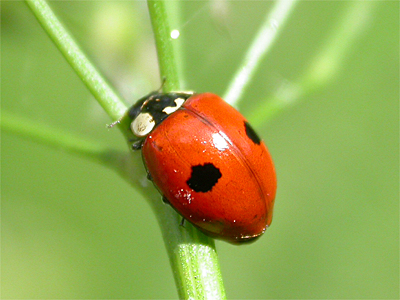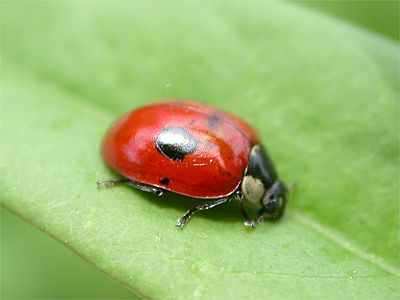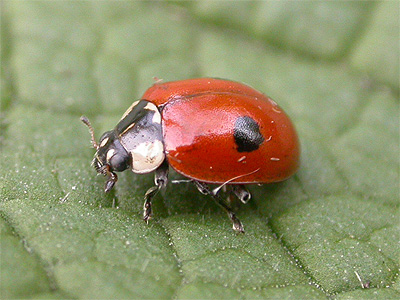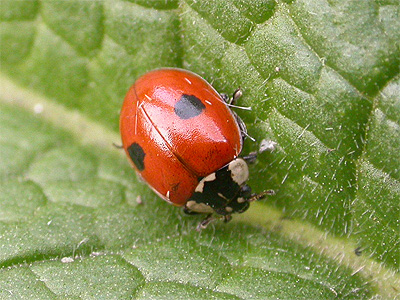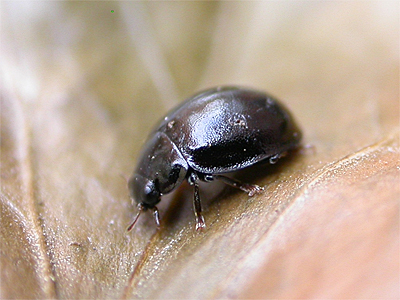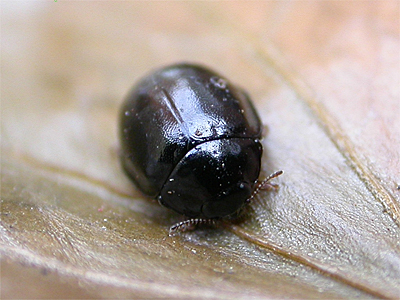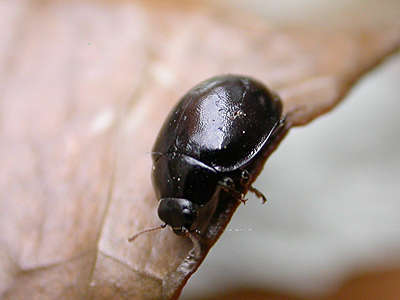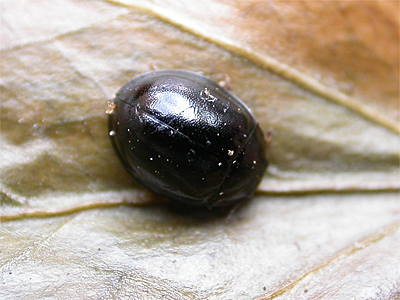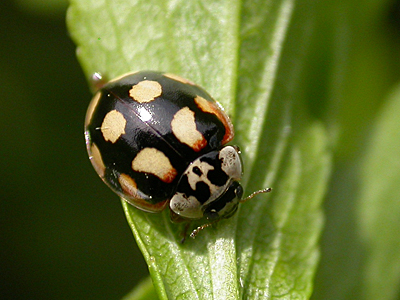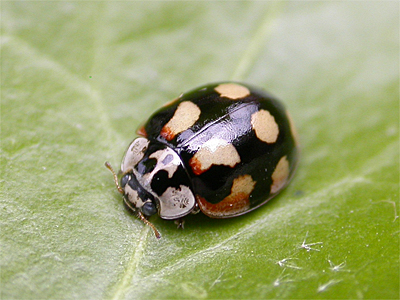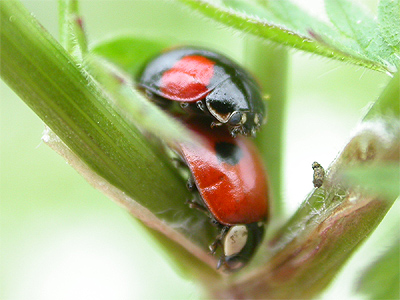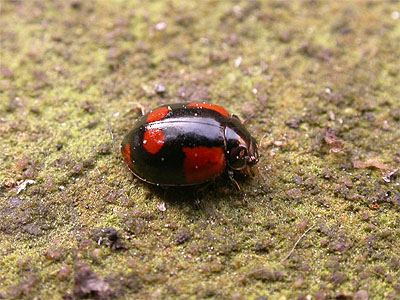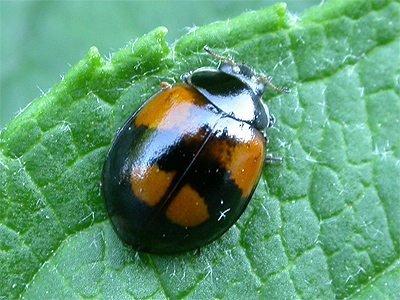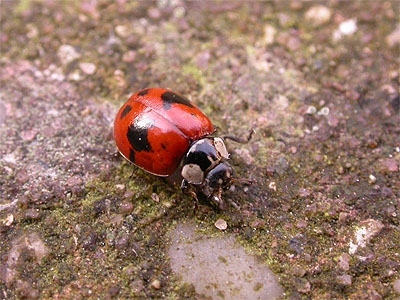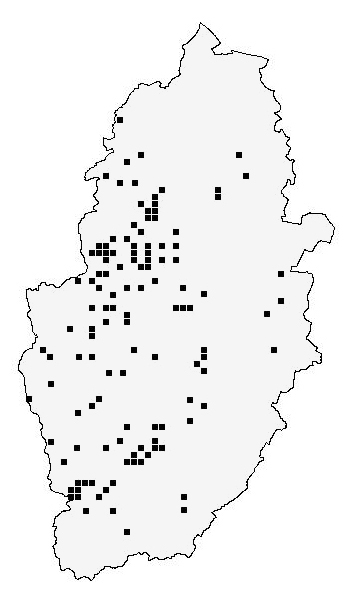The 2-spot
Ladybird was once one of our commonest UK Ladybirds and
with the much larger 7-spot Ladybird, was a familiar
sight in most gardens. Although the 7-spot Ladybird still
remains abundant, the Harlequin Ladybird is now probably
our second most common and the 2-spot (like many other
Ladybirds) shows fluctuations in population levels, with
numbers tending to increase or build up every five years
or so.
The upper four pictures show the typical form of 2-spot
Ladybird, but
a range of colour forms occur. The black elytral spots may be extended or multiplied,
and can become extended or reversed, to show a black ladybird with
red spots. In April 2024, Nick and Samantha Brownley found an all black
ladybird, which ultimately proved to be a melanistic male 2-spot
Ladybird. .... |


